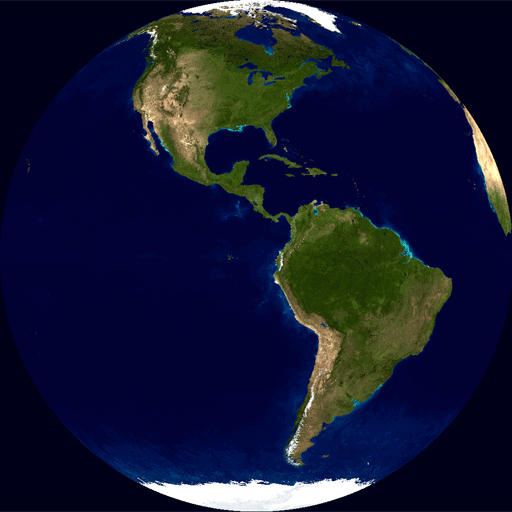According to NASA scientists, our days are 1.26 microseconds shorter because of the Chilean earthquake. Apparently, this is fairly common. The magnitude 9.1 earthquake that caused the 2004 tsunami shortened the day by 6.8 microseconds. The length of the day decreases because the distribution of Earth’s mass changed and angular momentum must be conserved. The effect is similar to an ice skater rotating in a circle. As she pulls her arms in, she rotates faster. How much skinnier would the Earth have to get for the day to last only one second?
The angular momentum of a rotating body can be computed using the equation,
angular momentum = (moment of inertia) · (angular velocity).
Using the Earth’s mass (~5.97×1024 kg) and radius (6371 km), we can estimate its moment of inertia as being equal to that of a sphere,
moment of inertia = 2 · (mass) · (radius)2 / 5
= 2 · (5.97×1024 kg) · (6371 km)2 / 5
= 9.7×1037 kg m2.
The angular velocity of the earth is given by,
angular velocity = 2 · π /(period)
= 2 π /(1.0 day)
= 7.3×10-5 Hz.
From this, we can compute Earth’s angular momentum to be about 7.1×1033 kg m2/s.
If the day was only one second long, the new angular velocity would have to be 6.26 Hz. Using the fact that the angular momentum must remain the same, we can compute the new moment of inertia,
moment of inertia = (angular momentum) / (angular velocity)
= (7.1×1033 kg m2/s) / (6.26 Hz)
= 1.1×1033 kg m2.
For reasons that will be clear in a moment, we will set this equal to the moment of inertia for a cylinder (rather than a sphere) and solve for the cylinder’s radius,
cylinder radius = [ 2 · (moment of inertia) / (mass) ]1/2
= [ 2 · (1.1×1033 kg m2) / (5.97×1024 kg) ]1/2
= 19 km.
To have a one-second long day, that Earth would become so skinny that it would start to look like a long cylinder. If it maintained the same density, it would now be 9.7×108 km long, about 2.5 times the distance to the Moon.


So then how much longer will my trip to Florida from NYC be?
ReplyDelete